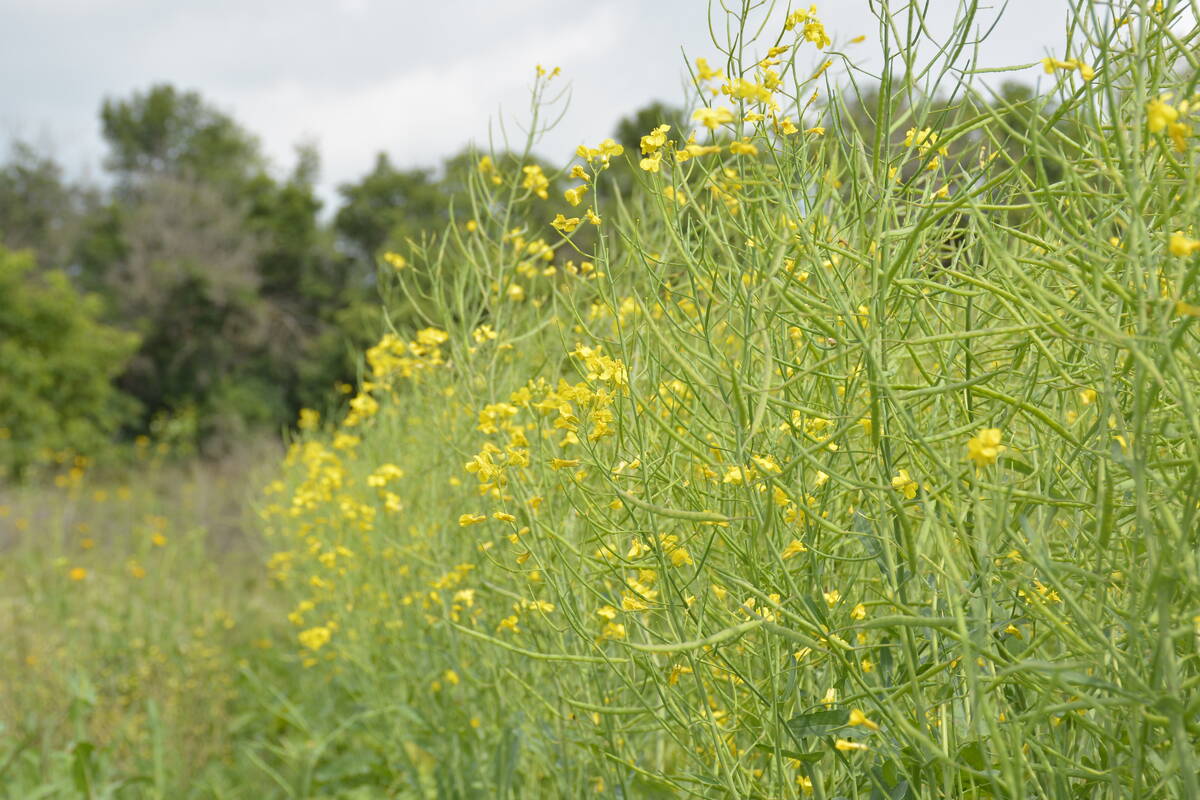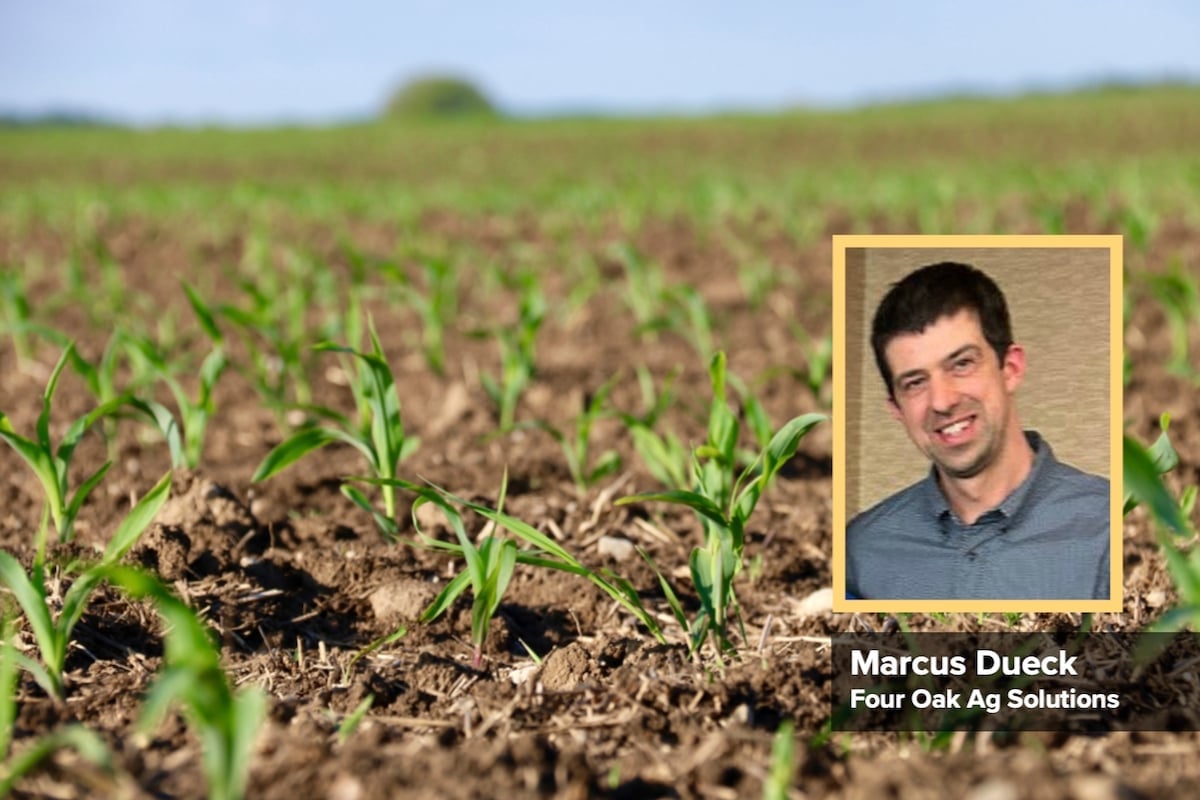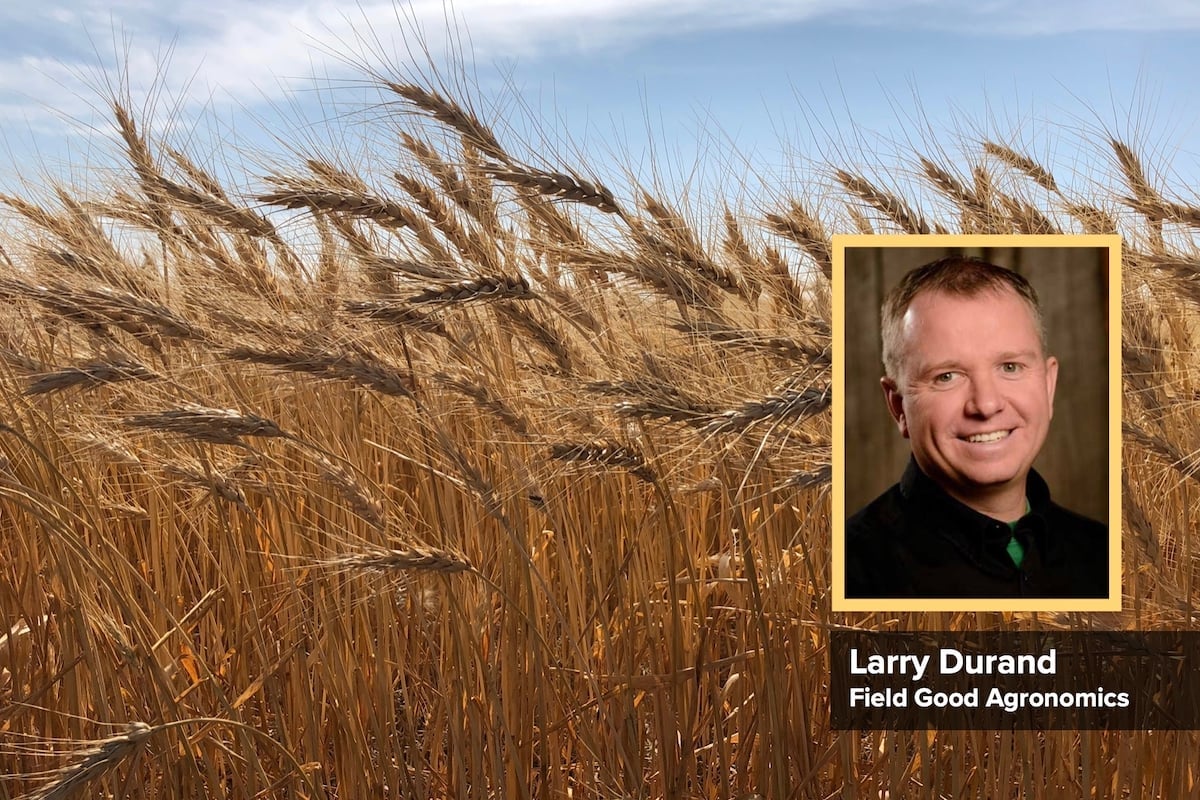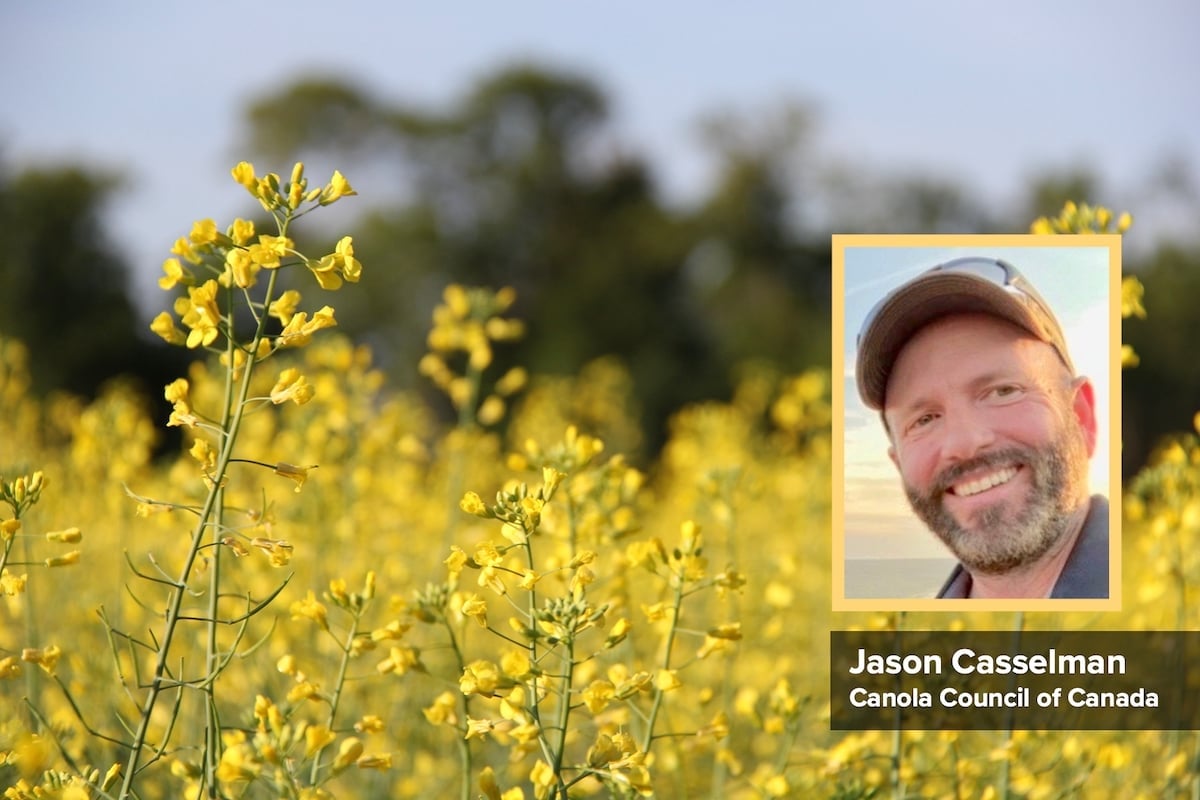The agronomist wish list | The Western Producer

Glacier FarmMedia – What do agronomists wish farmers would ask for, or stop asking for, or understand better about their jobs? And how can farmers get the most out of their relationships with agronomists?
While ultimately the customer calls the shots, Country Guide asked a few Western Canadian consulting agronomists what they would like to see from their clients.
They said their wish lists include better communication, for clients not to be afraid to ask questions, not to hesitate to share data, and to communicate their goals and expectations.
Read Also


Canada’s canola supply grows tighter
It is highly unusual to see a red number in the sea of black on Agriculture Canada’s monthly Grains and Oilseeds Supply and Disposition report.
Below are insights from agronomists on how already good relationships and services might be made even better.
Matt Gosling
Premium Ag Solutions, Strathmore, Alta.
While it is important for a consulting agronomist to provide some of the basic information on crop production — soil fertility and seeding rates, for example — Matt Gosling, owner of Premium Ag Solutions based at Strathmore, east of Calgary, says as client relationships develop the agronomist can also play a much bigger role.


After more than 20 years in the consulting business and establishing long-term relationships with many clients during that time, Gosling says the role of the consultant can evolve into being an advisor to the farm business.
“Years ago, I was involved in a service where consultants were known as agri-coaches and I like that term ‘coach’,” says Gosling. “We are more than just glorified soil samplers. We not only provide agronomic advice from season to season, but we can also contribute to discussions involving long-term plans for the operation.
“I’ve had a few long-term clients tell me that I know as much about their farming operation as they do. And as a second generation gets involved, and as farms get involved in succession planning, I see my role gently transitioning toward providing input into the planning process.”
Gosling says while clients connect with their agronomist in the field and farmyard a few times during the year, many consultants often spend “countless” hours behind the scenes involved in meetings, workshops, conferences and other research to keep up to date on products, trends and technology.
“We are there to serve our clients as advisors, so communication is important,” he says. “We need to share our knowledge as best we can, but farmers should also be asking questions. There is more to talk about than just how much nitrogen should be applied, because often people don’t necessarily follow your recommendation, anyway. We are advisors, we are paid to have an opinion so producers shouldn’t hesitate to ask for our input and then they can decide from there.”
Marcus Dueck
Four Oak Ag Solutions, Kleefeld, Man.
While Marcus Dueck has developed a great working relationship with clients over the past 18 years, he says there is always room for improvement as he aims to provide the best crop production advice that he can.


“Time is a big one that comes to mind,” says Dueck, who along with dairy farming and cash cropping, is also owner of Four Oak Ag Solutions, consulting services at Kleefeld, southeast of Winnipeg. “Often enough some things are left to the last minute, which means there may not be time to analyze information and make the best recommendation.”
Soil sampling is one example that comes to his mind. If soil sampling can be done in the fall, then that leaves all winter to look at the information and make fertility and cropping recommendations for the coming season. It also gives the producer more time to source inputs, perhaps at better prices.
“If soil sampling is left until the spring, then it may cost extra to fast-track the analysis, it is a different testing process that may provide information in a different format, there may be more of a rush to make recommendations and input decisions, and a producer may have buy whatever inputs are available at the price that day,” says Dueck. “Depending on circumstances, a spring soil test may be the only option, but it can lead to making more rush decisions which may not always be the best.”
Dueck encourages clients to make use of his consulting and advisory experience before making decisions. Rather than a producer taking some action and then talking to the crop consultant about it later, he says, “Often I can offer advice or experience that may help some action to be more effective or help avoid a costly mistake. I’m always available for clients to bounce their ideas off me and share my knowledge.”
He also urges clients to share as much information as possible with the crop consultant to aid in making better decisions. “I know as a farmer myself that my farm data is valuable,” Dueck says. “And there can be a tendency to only share so much. I understand that thinking. But when dealing with crop planning and production decisions the more a producer can share, the better. It may even involve sharing that somewhere in the past they made a mistake. So be it, it happens. But having a full understanding helps the consultant make better recommendations. It may not seem important, but that bit of information or data not shared could be important to cropping decisions for the season ahead.”
And, if at all possible, he also urges producers to follow through with plans for on-farm test plots or comparison trials. In the off-season there may be some great plans made to evaluate products, or varieties, or various treatments during the growing season. “But then when field work starts, the rush is on, days get busy and that extra 20 minutes to half hour needed to set up side-by-side comparison plots, for example, goes by the wayside,” says Dueck. When fall and winter rolls around and it’s time to have a look back at the crop year, the farmer must then tell Dueck that they didn’t get those comparison plots done.
“And almost immediately after they tell you they didn’t do the comparison plots, they say I should have taken that extra 20 minutes to get them set up,” says Dueck.
“I know the growing season can be hectic at times, but the information provided by those comparison plots and side-by-side trials is important. It is information that may lead to making better decisions about products or varieties or treatments for the following year. The time it takes to get them done is a good investment.”
Larry Durand
Field Good Agronomics, Humboldt, Sask.
Having good lines of communication between the agronomist and the farmer client is the key to everything, says Larry Durand, owner of Field Good Agronomics at Humboldt, Sask.


“It’s a two-way street,” says Durand, who has been providing consulting services for more than 25 years. “I certainly need to keep in touch with clients and likewise they need to feel comfortable about keeping in touch with me — by phone, email, text or whatever works best for them.
“And don’t be afraid to ask questions. You develop a close relationship with clients and ultimately become friends, so I encourage them to always be asking questions. It is important that we challenge each other. I can challenge them on some of their decisions, and there is nothing better than when a client says, ‘Larry I don’t know if this idea of yours makes any sense. I don’t see anyone else doing this.’ By all means challenge me.”
Durand says with so many new products on the market, he urges clients to ask his opinion whether something is worthwhile. “I try to keep informed as best I can and will give my opinion,” he says. “And if I don’t know, I will tell them that, but then do my best to find some research or information so I can at least make an educated guess.”
If there are time constraints, or a question comes up about a practice that Durand is not familiar with he will bring in a third party to work with the farmer. “I’ll make sure the client’s needs are looked after,” he says.
Fred Wood
Meridian Ag Consulting, Red Deer, Alta.
Long-time central Alberta agronomist Fred Wood says in the evolution of the consultant and farm client relationship “eventually you become friends.”


“As years pass you become part of the family,” says Wood. “You get to know when everyone’s birthday is. As generations age and often a new generation comes along, the farm changes as well. You get to know far more about the operation than just the agronomy.”
Through good communication channels, the agronomist should have a good understanding of where “the farm is at” and realize that each farm is different. The agronomist needs to understand each operation’s goals and objectives.
“An important question for farmers to ask the consultant is how often they will see them during the year,” says Wood. “If it is only two or three times a year, that is not enough.”
Wood, who works with clients primarily between Bowden and Bentley in west central Alberta, says at peak times of the year he is often checking fields every few days. To monitor the efficacy of herbicide treatment, for example, he makes the first field check after seven days and then again after 14 days to determine if products are working and to look for signs of herbicide resistance. “Depending on the situation I may be checking back on fields every three or four days,” he says.
When selecting a consulting agronomist, one other important screening tool producers should use is to ask if the agronomist is independent. Wood is a member of an organization known as the Alberta Independent Agronomy Consultants.
“One of the criteria to be a member of this organization is that the agronomist can’t sell any products,” says Wood. “We feel that is a conflict of interest.” He says that in dealing with some retailers and going to trade shows, he sees that everyone has a product they want to sell “and a lot of times I have no idea how these products are supposed to work,” he says. “I think a lot of times you’re looking at magic powders and fairy dust. Working with an independent agronomist, you get their unbiased advice and recommendations.”
Wood says in his experience there are no easy fixes or silver bullets. “For producers looking to optimize yield, for example, the biggest gains are to be made by properly applying the fundamentals of agronomy,” he says. “There may be some products that might give you a slight advantage, but first do your best with the basics, the proper timing, and application of the agronomic fundamentals.”
Wood also believes it is best for clients if the agronomist lives within close proximity to their growing area, rather than being 100 km or more away.
Jason Casselman
Agronomy Specialist, Canola Council of Canada, Fairview, Alta.
As a former grain company agronomist, now working as an agronomy specialist with the Canola Council of Canada, Jason Casselman says a farmer should be asking if their consulting agronomist has a great network of people behind them.


“Either you have to be really experienced and know everything, or the agronomist needs to have a solid network of people that they work with,” says Casselman, who is based at Fairview in Alberta’s Peace River region.
“It can be a network of other agronomists or even a solid network of producers. The agronomist might see or hear something from someone in their network on another farm or another part of Alberta and then see if that information is of value to your farm.
“It could be a production practice or perhaps a weed or insect pest that’s happening in one area, so then the agronomist can see if it is something another farmer might be interested in or might be watching for.”
Whether the person works for an organization or is an independent agronomist, Casselman says having a good network of peers or producers is valuable.
He also says that as an agronomist is making field checks and providing reports, it is important they make connections with the decision-makers on the farm. “If you have information to report or are making recommendations, make sure you connect with the decision-maker,” he says. “It might be good to tell an equipment operator you see in the field, but you also want to make sure the farmer knows as well. And sometimes if there are a couple generations of farmers involved, you might want to make sure you connect with both, so there is no misunderstanding and everyone knows what is going on.”
Having a good two-way line of communication with the farm client is important as well, he says. “There needs to be good communication between both sides,” says Casselman. “As the relationship develops you get to know the farm as good as or almost as good as they do. The agronomist needs to be knowledgeable on technical matters, such as weed identification and crop protection products, but they also need to understand the philosophy and the goals of the farming operation and realize that no two farms are alike. You have to know your farm client and make sure you have their best interests at heart.”
Brunel Sabourin
Antara Agronomy, Saint Jean Baptist, Man.
In southern Manitoba, Brunel Sabourin says that to develop a relationship with the farm client it is important to determine if there are issues that require a long-term solution or can be corrected with quick fixes.


Some clients are looking for limited agronomic services, perhaps involving only a few fields, or having some services provided every couple of years, which is fine.
However, Sabourin, owner of Antara Agronomy and lead agronomist, says to provide the most benefit to a producer he prefers to work with all cropped acres. That helps him to understand the whole farm operation better and be in a better position to monitor and measure improvements.
“When you are dealing with issues involving soil health and herbicide resistance in weeds, for example, they require more of a long-term solution,” says Sabourin, who has been a crop advisor for more than 25 years. “You can’t change things overnight and you need to monitor from season to season to see where you are making progress.”
Each spring the Red River Valley area of southern Manitoba receives runoff and floodwaters from the northern U.S. Those waters often carry weed seeds from U.S. cropland that already have herbicide-resistance issues. There may be herbicide options available in Canada, but he says dealing with herbicide resistance usually requires a combination of cultural practices and chemical treatments.
Good communication between the farmer and agronomist is essential, says Sabourin. He urges farmers to ask questions. “We will do field scouting and testing and do our best to report back to the client as soon as possible, but if they haven’t heard from us they should call. It is important for the agronomist and farmer to know each other’s expectations. Clients are welcome to call as often as they need.”
He says monitoring crops for weeds, diseases and insects requires repeat visits to the fields over the full growing season. “A producer might say they don’t need a report every week, but it is only by monitoring crops that we can properly assess the risk and recommend whether treatment is required,” says Sabourin. “You can’t make that determination with just one field visit.”
Lee Hart is a long-time agricultural writer based in Calgary. Contact him at 403-815- 3719 or by email at lee@fbcpublishing.com.
Source: producer.com


